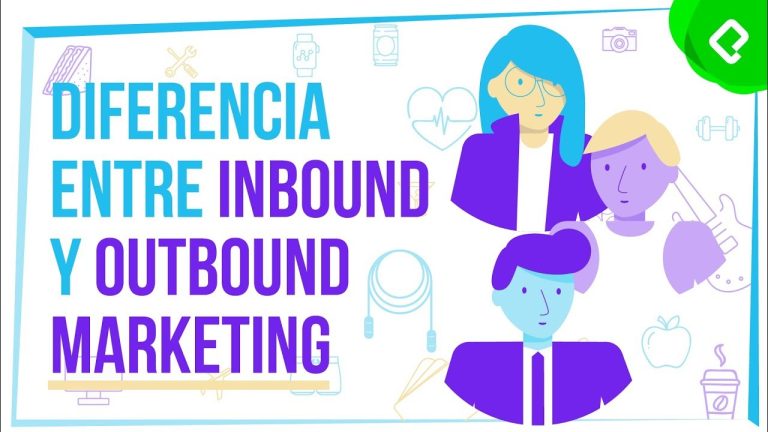Contenidos
Inbound y outbound marketing
Outbound marketing strategy
Inbound and Outbound marketing are two sides of the same coin, although they are two opposite methodologies. If you want your company to be profitable in the long term, combining these two formulas is the smartest decision for your business.
The ultimate goal of both disciplines is to capture the attention of audiences and bring them closer to the brand in order to convert them into customers. But combining them means knowing how to adapt your company’s overall strategy to each stage of the conversion funnel. This is vital for users to maintain their interest in the brand and follow the entire path to conversion.
It should not be forgotten that people receive around 10,000 advertising impacts per day. This is a chilling figure but, above all, it highlights an undeniable reality: competition to capture a larger market share is fierce.
This does not mean that at any given time you cannot exploit their particularities separately. In fact, at specific moments you will find that one or the other strategy will be more effective. However, it is recommended that both Inbound and Outbound marketing be part of every company’s arsenal.
Comentarios
El inbound marketing es una metodología basada en atraer a nuestro público objetivo acompañándolo en su viaje hacia la decisión de compra. Las estrategias de inbound marketing llevan a su audiencia de la mano desde el descubrimiento de la marca hasta su fidelización.
Ahora bien, si tomáramos las estrategias inbound y outbound y les pusiéramos un símbolo a cada una, el inbound marketing sería el equivalente a un imán, mientras que el outbound marketing sería el equivalente a un megáfono.
El inbound marketing es un conjunto de técnicas y herramientas que se basan en la atracción de clientes potenciales de forma no intrusiva. Con ellas, buscamos atraer más tráfico a nuestra web, hacer ofertas atractivas a los usuarios para que se conviertan en leads y guiarlos a través del proceso de lead nurturing hasta que se conviertan en clientes fieles.
Otro recurso utilizado para clarificar las diferentes fases del proceso de inbound journey es el “embudo de conversión”: en la parte superior del embudo tenemos a todos los usuarios que visitan nuestra web y contenidos, mientras que en la parte inferior del embudo (la más estrecha) tenemos a los que conseguimos convertir en clientes.
Outbound vs inbound
Opting for the traditional approach, this offer would reach us, for example, through a banner on a website we are visiting. What is the probability that this offer will be of interest to us? In principle we do not know, but it is clear that it is a very cold contact, since we do not have enough information to determine whether the user accessing that page may or may not be interested in the course.
The same thing would happen if we sent this offer to all the contacts in our database. Would any of them sign up? Probably yes, but on the other hand, we are interrupting a significant percentage of our users who have not asked for information about the offer.
Outbound Marketing is characterized by interrupting the user. Through unexpected calls, spam emails or ads that surprise you when you access a page, traditional marketing “disturbs” the user to deliver its offers.
On the contrary, Inbound Marketing, also called attraction marketing, does precisely this, it attracts users through less intrusive techniques. For example, through a good SEO optimization of our website and content designed for our buyer personas, we can attract and capture users interested in content related to their needs.
Outbound meaning
Inbound and outbound marketing are both marketing strategies that seek more or less the same thing but differ in the way they get results. Know the main differences and decide for the best methodology that actually leads you to meet your business objectives.
Resorting to the same methods that have worked in the past (guerrilla marketing, media advertising, flyers) to get the attention of consumers is nonsense, at least exclusively.
Inbound marketing is a methodology that is based on the inbound philosophy, a way of doing business that puts the user at the center of the strategy and uses tactics to attract, interact and delight in order to increase sales, provide a satisfying digital experience and build strong customer relationships.
Outbound marketing, on the other hand, refers to traditional marketing characterized by its focus on the product and using aggressive tactics to get the user’s attention: a way of doing business that was done successfully for a long time but is now obsolete, unless approached as a complement to a digital strategy.

